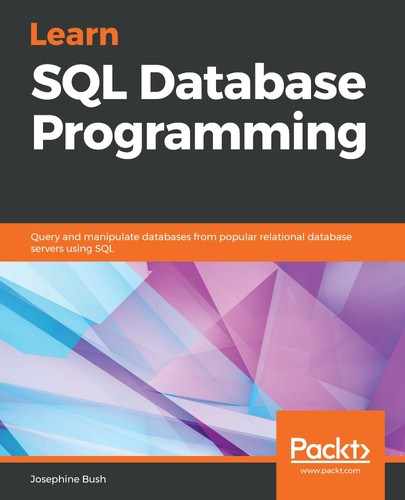You can also use the WHERE clause along with the GROUP BY clause. The GROUP BY clause will go after the WHERE clause like so:
USE lahmansbaseballdb;
SELECT playerid, teamid
FROM batting
WHERE playerid = 'aardsda01'
GROUP BY teamid, playerid;
The previous query returns the results shown in the following screenshot:

Here, you can see that you are now only getting the results for aardsda01.
As a comparison, if you execute the previous query without GROUP BY, the query will return one additional row:
USE lahmansbaseballdb;
SELECT playerid, teamid
FROM batting
WHERE playerid = 'aardsda01';
The following screenshot shows the results of running the previous query:

You can now see two rows containing style. This is because this player was on the Seattle team for 2 years, whereas he was only on the other teams for 1 year. You can view this information by executing the following query:
USE lahmansbaseballdb
SELECT playerid, teamid, yearid
FROM batting
WHERE playerid = 'aardsda01';
The following screenshot shows you the results of running the previous query:

Here, you can see that teamid is not unique because there are 2 years for the SEA team ID. This shows us that GROUP BY is like using DISTINCT.
The following table shows a comparison between GROUP BY and DISTINCT:
| GROUP BY query | DISTINCT query |
|
USE lahmansbaseballdb; |
USE lahmansbaseballdb; |
|
GROUP BY query results |
DISTINCT query results |
|
|
|
Here, you can see that GROUP BY, without aggregate functions, produces the same results as DISTINCT.

